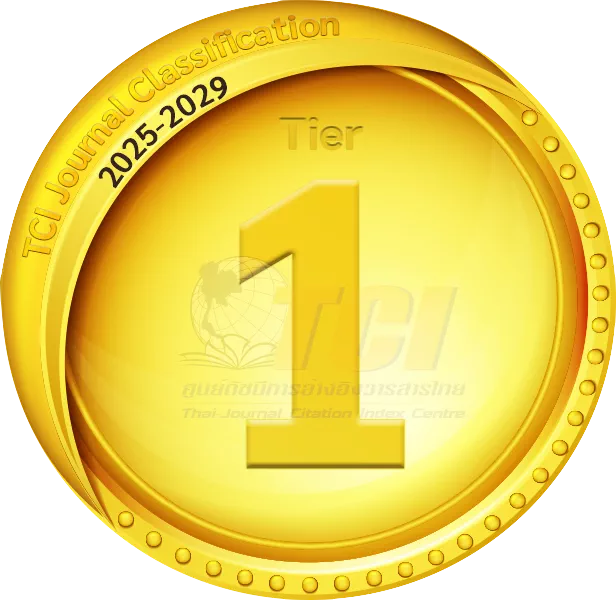The Utilization of Integration of Stem Education Approach with Five Steps Learning Process to Enhance Learning Achievement and Problem Solving Abilities
Keywords:
STEM Education approach with five STEPs Learning Process, Learning Achievement, Problem Solving AbilitiesAbstract
This study is aimed (1) to compare learning achievement and problem solving abilities after using STEM Education approach with five STEPs Learning Process between before and after the learning, and (2) to compare learning achievement and problem solving abilities of grade ten students after using Stem Education approach with five STEPs Learning Process with the set 70 percent criteria. The participants were 40 grade ten students who studied in the second semester of 2018 academic year from school of Saint Gabriel’s Foundation using cluster sampling. The research instruments were, (1) Stem Education approach with five STEPs Learning Process lesson plan, (2) Learning Achievement Test, and (3) Problem Solving Abilities Test. The data were analyzed using mean, standard deviation, t-test for dependent sample, and t-test for one sample.
The results indicated that (1) The Posttest mean scores of learning achievement and problem solving abilities of grade ten students after learning with the STEM Education approach with the five STEPs Learning Process were statistically significantly higher than the Pretest mean scores at the .01 level. And (2) The Posttest mean scores of learning achievement and problem solving abilities of grade ten students after learning with the STEM Education approach with the five STEPs Learning Process were statistically significantly higher than the set 70 percent criteria at the .01 level.
References
Thai Language
Jesadawiroj S. (2005). Integrated teaching management. Bangkok: Bookpoint
Khueang-Nil S., Detsri P. and Prademmojee A. (2006). Problem Solving for Tomorrow’s World. Bangkok: Seven Printing Group.
Ministry of Education. (2012). Guidelines for teaching and learning in international standard schools (Revised edition). Bangkok: The Agricultural Cooperative Assembly of Thailand
National Institute of Educational Testing Service (Public Organization). (2017). Announcement and report system of Ordinary National Educational Test. Retrieved April 14, 2018, from
http://www.onetresult.niets.or.th/AnnouncementWeb/Notice/FrBasicStat.aspx
Dechupa P. and Yindeesuk P. (2005). Teaching and learning focused on students: concepts, methods and teaching techniques. Bangkok: The Master Group Management Company Limited.
Thongchai A. (2013, November - December). What is technology and engineering in full study. Institute for the Promotion of Teaching Science and Technology (IPST.), 42 (185), 10-13.
English Language
Anderson, Lorin W. & Krathwohl, David R. (2001). A Taxonomy for Learning, Teaching and Assessing: a Revision of Bloom’s Taxonomy. Newyork. Longman Punblishing.
Asunda, P.A., & Mativo, J. (2015). Integrated STEM: A NEW PRIMER FOR TEACHING TECHNOLOGY EDUCATION. The Education’s Encyclopedia. New Jersey: Prentice-Hall, Inc.
Capraro et al. (2013). STEM Project-based learning. Texas: Sense publisher.
International Institute for management Development. (2015-2017). IMD releases its 2015-2017 World Competitiveness Ranking. Retrieved April 14, 2018, from http://www.simd.org/news/IMD-releases-its-2015-World-Competitiveness-Ranking.cfm
Weir, J. J. (1974). “Problem Solving is Everybody’s Problem”, The ScienceTeacher. 4 (April 1974), 16 – 18.
Downloads
Published
How to Cite
Issue
Section
License
The submitting author warrants that the submission is original and that she/he is the author of the submission together with the named co-authors; to the extend the submission incorporates text passages, figures, data, or other material from the work of others, the submitting author has obtained any necessary permission.
Articles in this journal are published under the Creative Commons Attribution License (CC-BY What does this mean?). This is to get more legal certainty about what readers can do with published articles, and thus a wider dissemination and archiving, which in turn makes publishing with this journal more valuable for you, the authors.



